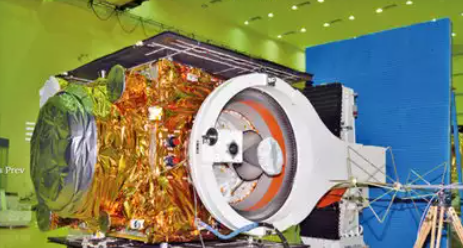Atomic Clocks and India (GS Paper 3, Science & Tech)

Why in news?
- India is strategically distributing atomic clocks nationwide to synchronise the time displayed on digital devices such as watches, smartphones, and laptops with Indian Standard Time.
- This initiative, initiated over twenty years ago following the Kargil war, aims to ensure accuracy and reliability in timekeeping across the country.
About Atomic Clocks
- Atomic clocks are advanced timekeeping devices that utilise the natural vibrations of atoms to measure time with exceptional accuracy.
- These clocks rely on the oscillations of atoms, usually caesium or rubidium, which serve as highly stable timekeeping references.
- By detecting the frequency of these atomic vibrations, atomic clocks can maintain timekeeping precision to within a few billionths of a second per day.
- The atomic clock was developed by Louise Essen in 1955. Presently, India has operational atomic clocks located in Ahmedabad and Faridabad.
How do Atomic Clocks works
- Atomic clocks operate by employing a specific type of atom known as “caesium atoms.”
- Caesium atoms are highly stable and exhibit a precise frequency at which their electrons oscillate.
- This frequency serves as the fundamental reference for timekeeping in the atomic clock.
- In the process of measuring time using caesium atoms, an atomic clock utilises a component called a “microwave cavity.” This cavity functions as a chamber containing caesium vapour.
- A microwave signal is introduced into the cavity, prompting the caesium atoms to undergo vibration.
- During this vibration, the caesium atoms emit radiation characterised by a highly specific frequency.
- A detector within the atomic clock then captures this emitted radiation and compares it against a predetermined standard frequency.
- Any disparity between these frequencies is utilised to make adjustments to the clock’s timekeeping mechanism.
Different types of Atomic Clocks
- Cesium Atomic Clocks: The most widely used type, caesium atomic clocks, measure the frequency of transitions in the cesium-133 atom, typically using a microwave resonance method. These clocks are highly accurate and serve as the primary standard for defining the second in the International System of Units (SI).
- Rubidium Atomic Clocks: Rubidium atomic clocks operate similarly to caesium clocks but use rubidium atoms as the reference instead. They are generally smaller, less expensive, and more portable than caesium clocks, making them suitable for applications where size and cost are important factors.
- Hydrogen Maser Clocks: Hydrogen maser clocks are even more precise than caesium clocks. They rely on the hyperfine transition of hydrogen atoms and operate at much higher frequencies, resulting in superior short-term stability and accuracy. These clocks are commonly used in scientific research, satellite navigation systems, and space missions.
- Optical Atomic Clocks: Optical atomic clocks use optical transitions in atoms, such as those of strontium or ytterbium, to achieve even higher precision than traditional atomic clocks. By operating at optical frequencies, they can potentially redefine the second with even greater accuracy. Research in this field is ongoing, with optical clocks showing promise for future applications in areas like fundamental physics research and global positioning systems.
Rationale behind India going for Atomic Clocks
- India started efforts to develop atomic clocks in response to the denial of Global Positioning System (GPS) information during the Kargil War. The establishment of independent timekeeping capabilities is necessary for defence, cybersecurity, and online transactions.
- National Security and Self-Reliance: Currently, India relies on foreign atomic clocks, particularly those in the US, for critical infrastructure like the Indian Regional Navigation Satellite System (NavIC). Developing its own atomic clocks allows India to control its timekeeping infrastructure, reducing dependence on external sources. This is vital during potential conflicts where access to foreign signals could be restricted.
- Enhanced Accuracy and Reliability: Atomic clocks offer unmatched precision compared to conventional methods. By deploying them across the nation, India can synchronise all digital devices with Indian Standard Time (IST), ensuring a unified and highly accurate time reference. This translates to improved performance in various sectors:
- Telecommunications: Precise timing is essential for the smooth operation of communication networks, minimising errors and ensuring seamless data transfer.
- Financial Systems: Timestamping financial transactions with atomic clock accuracy minimises errors and safeguards against fraud in high-frequency trading.
- Navigation Services: India’s NavIC system can benefit from the enhanced timing provided by domestic atomic clocks, leading to more reliable positioning data.
- Cyber security: In India’s burgeoning digital economy, atomic clocks ensure the accuracy of timestamps for transactions, preventing fraud, ensuring data integrity, and bolstering cybersecurity measures.
- “One Nation, One Time”: With a network of atomic clocks, India can achieve a unified and precise time standard across the country. This fosters a sense of national coherence and simplifies time-related activities for citizens and businesses alike.’
- Critical Infrastructure and Power Grids: Atomic clocks play a vital role in synchronising critical infrastructure, including power grids, transportation systems, and emergency services.


